The Beginner’s Guide to the Paleo Diet
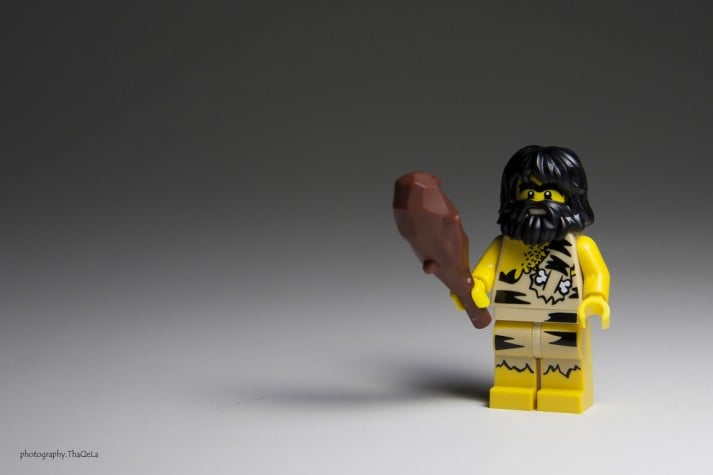
The Paleo Diet is an effort to eat like we used to eat back in the day…WAY back in the day. If a caveman couldn’t eat it, neither can you.
This means you can eat anything we could hunt or gather – meats, fish, nuts, leafy greens, regional veggies, and seeds. Sorry, the pasta, cereal, and candy will have to go! Instead of pasta, you’ll be making things like paleo spaghetti, chicken stir fry, or paleo tacos.
You see, I hate counting calories.
I don’t like keeping track of how much I’ve eaten or obsessing over how many grams of a particular nutrient I’ve had. Not only do I hate counting calories, but I know that calories are really only half of the battle, as they’re not all created equal – 400 calories of Doritos do NOT affect your body in the same way as 400 calories of high-quality vegetables and protein.
Fortunately, if you can expand your horizons and remove certain types of food from your diet, you can stop worrying about counting calories FOREVER (sorry, the Count – ah ah ah). I’d love to suggest a particular type of eating that doesn’t require counting a single calorie AND allows you to eat until you’re no longer hungry. Oh, and it can help you lose weight, build muscle, and get in the best shape of your life.
I know, that sounds like an ad for some really shady supplement or diet book that you’d see on TV at 4 AM. It’s not, it actually works. It’s helped many people achieve jaw-dropping transformations, including my friend Saint, (whose story you can read here):
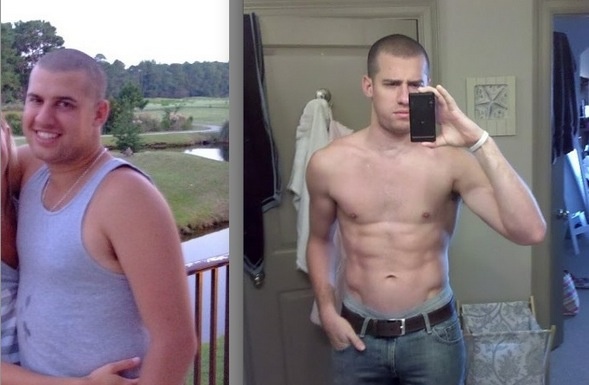
Cue the Baltimora!
So how does the Paleo Diet work?
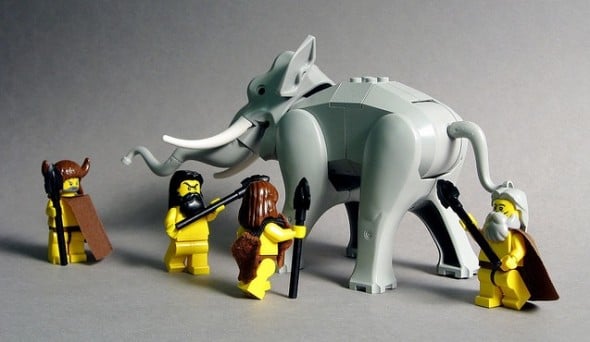
Oh lord, another “diet.”I know, it sounds like a fad/marketing ploy, but it’s actually quite legit. You see, tens of thousands of years ago, before Nike, Cap’n Crunch, and Healthy Choice meals, our ancient ancestors thrived as hunter-gatherers. Although it’s been a really long time, our genetics haven’t changed that much since then.
The average Homo Sapien back then: tall, muscular, agile, athletic, and incredibly versatile.
The average Homo Sapien now: overweight, out of shape, stressed out, unhappy, sleep deprived and dying from a myriad of preventable diseases.
So what the hell happened? Agriculture! A few thousand years ago humans discovered farming, the agricultural revolution took off, and we advanced from hunter-gatherers to farmers. We settled down, formed societies, and the human race progressed to what we are today.
The problem is, our bodies never adjusted properly to eating all the grains that we we’re now farming. As Robb Wolf puts it, think of a 100-yard football field. The first 99.5 yards are how long Homo-Sapiens spent as hunter-gatherers. As they became REALLY good at hunting and gathering our bodies adapted to that lifestyle over thousands of years. That last half-yard represents our species after the agricultural revolution, where our diet has shifted (but our genetics haven’t).
So, instead of loading up on meat, vegetables and seasonal fruits, we’ve become a species “dependent” upon grains – bread, pasta, rice, corn, and so on. The government continues to recommend 6-11 servings of grains a day, and people continue to get fatter and fatter by the day.
66% of us are overweight, 33% are considered obese, and those numbers are only getting worse.
Clearly something’s not right. The Paleo Diet is an effort to go back to eating how we’re biologically designed to eat, allowing us to tap into our genetic potential and start living healthier immediately.
WTF is the Paleo Diet?
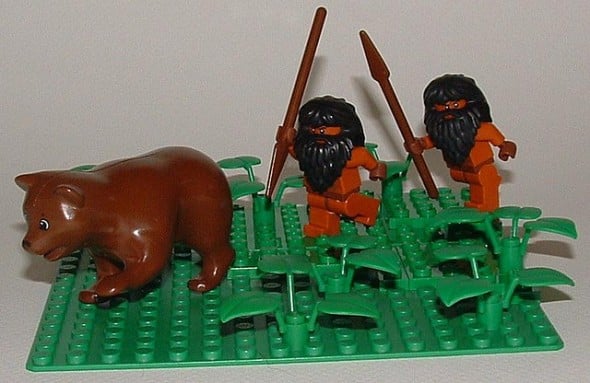
Back in the day, grains weren’t part of our diet.
As Mark from Mark’s Daily Apple points out in his “definitive guide to grains” article: grains cause kind of a funky response in our system. Grains are composed of carbohydrates, and those carbs are turned into glucose (a type of sugar) in our system to be used for energy and various other tasks to help our body function – any glucose that isn’t used as energy is stored as fat.
Rather than me explain that part with thousands of words, just watch this three-minute video – “Why You Got Fat“
Next, most grains contain gluten and lectins. What are they and what’s wrong with them? I’m so glad you asked:
- Gluten is a protein found in things like rye, wheat, and barley. It’s now being said that much of our population may be gluten-intolerant (hence all the new “gluten-free!” items popping up everywhere). Over time, those who are gluten intolerant can develop a dismal array of medical conditions from consuming gluten: dermatitis, joint pain, reproductive problems, acid reflux, and more.
- Lectins are natural toxins exist within grains to defend against consumption! Yup. Grains have evolved to keep themselves from being eaten by us. These lectins are not a fan of our gastrointestinal tract, prevent the tract from repairing itself from normal wear and tear. This can cause all kinds of damage.
As Mark so eloquently puts it in his article: grains are unhealthy at best, or flat-out dangerous at worst.
The Paleo Diet also almost completely eradicates sugar. Unless you’re getting your sugar from a fruit, forget it. Sugar causes an energy spike and crash in your system, turns to fat unless it’s used immediately, and wreaks all kind of havoc on our bodies.
So, no grains, no sugar, no processed foods. Whether you’re talking about the paleo diet or not, many studies have shown that an incredible number of diseases and lifestyle issues can be reversed with these three simple changes. Take a look at this time magazine article on cancer patients who switched to a zero-sugar diet and saw positive results.
But where’s my energy?
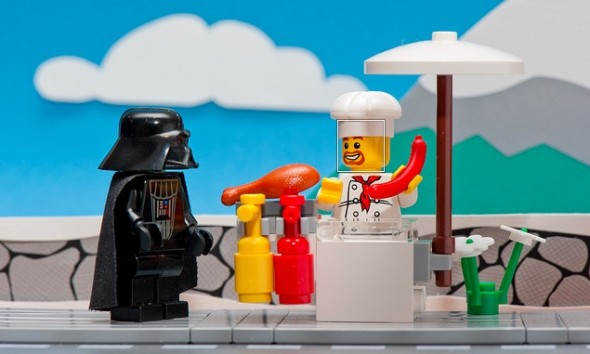
So, if we’re not eating 300+ grams of carbs every day, where are we supposed to get our energy from?
Our bodies are designed to operate on a lower amount of carbohydrates than what we’re used to eating, so less carbs isn’t an issue. When there is an absence of carbs (which is how we’re USED to operating), our body will take stored fat and burn THAT for energy in a process called ketogenesis.
What I’m trying to tell you is that our bodies are pretty effin’ efficient.
So, less carbs = less glucose in your system, which means your body will have to start burning fat as your fuel source. Win!
So all carbs are bad?
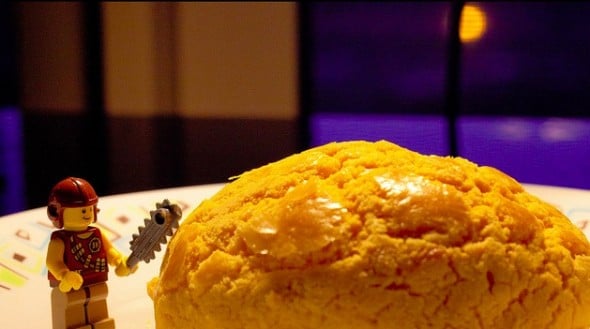
Nope. Carbs still serve a purpose in our diets, but they’re not essential (check out the Inuit Paradox for a great read on societies that exist without almost any carbohydrates). I prefer to get my carbs from vegetables, sweet potatoes, and fruit. Why is that? These foods are naturally occurring in the wild and don’t need to be processed in any way (unlike grains) in order to be consumed.
The other great thing about vegetables is that you can eat as many of them as you like and you’ll never get fat. They’re incredibly nutrient dense and calorie light – six servings of broccoli (and who would eat 6 servings at once?) has 180 calories and only 36 grams of carbs. A single serving of pasta (and NOBODY eats just one serving of pasta) has 200 calories and 42 grams of carbs.
Now, eating paleo does not automatically mean that you are doing a ketogenic diet (no carb) or a low carb diet. However, even if you have a serving of sweet potato (26g per 1 cup serving) with every meal, it’s likely a lot lower in carbs than you’re used to having.
What about dairy?
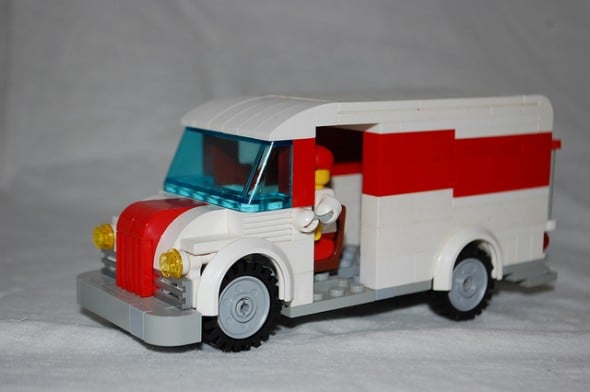
Dairy’s a tough one, as most Paleo folks tend to stay away from it – a portion of the world is lactose intolerant, and those that aren’t usually have at least some type of an aversion to it. Why is that? Because no other animal in the entire kingdom drinks milk beyond infancy. Hunter-gatherers didn’t lug cows around with them while traveling – milk was consumed as a baby, and that was it. As with grains, our bodies weren’t designed for massive dairy consumption. There is evidence that some adaptation to dairy has taken place throughout the years, specifically with people with ancestry in herding cultures, but this is not the majority of the population.
Here’s a great read on the benefits/criticisms of dairy.
Personally, I’m split on dairy, as I can drink whole milk without any sort of issue and I consider adding it back into my diet when I need to get enough calories to bulk up.
So no grains, no dairy: what DO I get to eat on this diet?
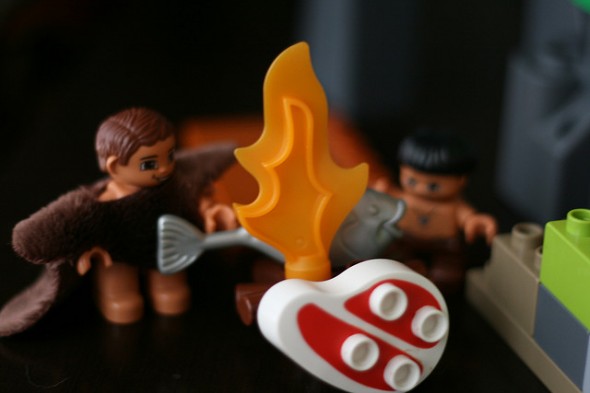
Okay, so if we cut out the grains, almost all processed foods, and dairy, you’re left with only things that occur naturally:
- Meat – GRASS-FED*, not grain-fed. Grain causes the same problem in animals as they do in humans.
- Fowl – Chicken, duck, hen, turkey…things with wings that (try to) fly.
- Fish – Wild fish, as mercury and other toxins can be an issue in farmed fish
- Eggs – Look for omega-3 enriched cage free eggs.
- Vegetables – As long as they’re not deep-fried, eat as many as you want.
- Oils – Olive oil, coconut oil, avocado oil – think natural.
- Fruits – Have natural sugar, and can be higher in calories, so limit if you’re trying to lose weight.
- Nuts – High in calories, so they’re good for a snack, but don’t eat bags and bags of them.
- Tubers – Sweet potatoes and yams. Higher in calories and carbs, so these are good for right after a workout to replenish your glycogen levels.
*If you can only afford grain-fed meat, that’s still better than grains. Do the best you can with your situation!
Steak with asparagus and sweet potato fries, grilled chicken salad, massive omelets that will fill you up for the whole morning, apples dipped in almond butter (my favorite snack ever), and so on. Pick any of the things from that list, and eat as much as you want of them (with the noted exceptions). You’ll feel better and be healthier.
How come I won’t get fat?
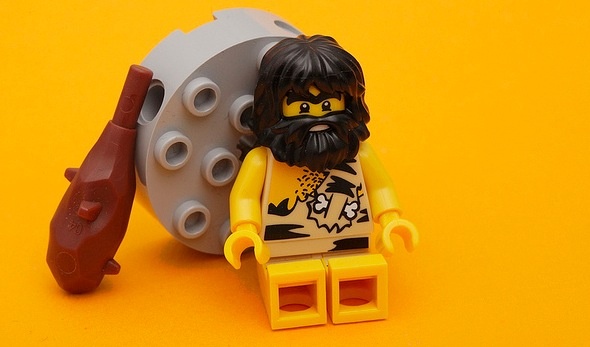
Because these foods are so nutritious and filling, it’s almost impossible to overeat.
To get the equal number of calories from a bag of Doritos or bread (which, as you know, you can eat all day long and never really feel full), you’d have to eat 2-3 Mack trucks full of broccoli and spinach. Okay, that’s clearly an over-exaggeration, but you get the point. A GIANT plate of vegetables and a reasonable portion of meat can keep you full for hours, while eating carb-heavy foods can result in being hungry again soon after.
Whenever I need to lose weight for vacation, I go 100% Paleo and I can drop a few body fat percentage points in a few weeks (while combining it with strength training and interval running).
I like success.
But I can’t give up my muffin, pasta, bagel, pizza, and bread!
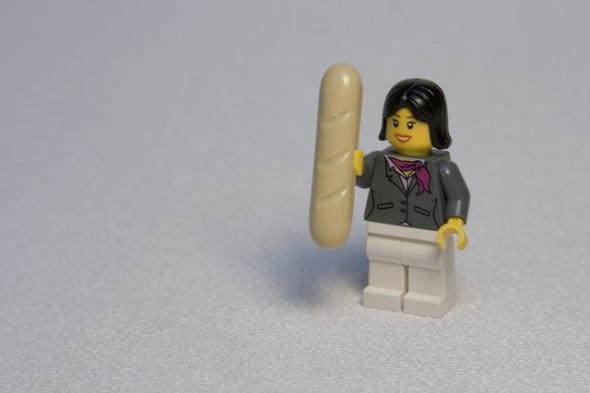
Okay then, don’t try the Paleo Diet! Simple as that.
If you’re happy with how you look, your energy levels are good all day, and you don’t see any room for improvement, then keep doing what you’re doing – I won’t force you to eat like this. However, if you’ve been struggling with weight loss, have no energy throughout the day, need eight cups of coffee, hate counting calories, and want to start turning your life around today, why not give it a shot for 30 days?
TRY IT: If after 30 days you haven’t noticed a marked improvement in your quest for a better life, then go back to the donuts. It’s important to give yourself a full 30 days before passing judgment. Your body has to adjust from fueling itself on carbs and sugar to burning your stored fat for energy, which can take a few weeks.
If you’re not willing to cut out grains from your diet completely, just work on MINIMIZING those foods gradually and see how your body adjusts. Slow transitions are often much easier to handle over the long-term; the more you can shift your diet closer to Paleo principles, the faster you’ll start to see results.
How much should I eat of each nutrient?

Keep it simple: Try to get a really good protein source with each meal (eggs, steak, chicken, fish, pork) with each meal along with some vegetables. That’s it. If you’re having trouble getting enough calories daily, or feeling hungry constantly, add some healthy fats to the equation: avocado, a handful of almonds or walnuts, almond butter, olive oil, etc.
If you’re feeling tired all the time, try adding some salt to your food. Going from a processed, high sodium diet to a paleo diet you will very often end up eating too little sodium, which is an essential nutrient.
Now, fruit does have quite a bit of sugar in it, and nuts have quite a few calories…so if you are following the Paleo Diet but not losing weight, check your fruit and nut consumption and see if you are loading up on those at the expense of vegetables and healthy protein.
What I’m trying to say is this: fat should make up a big percentage of your diet.
Baaaaack up: I thought fat made you fat?
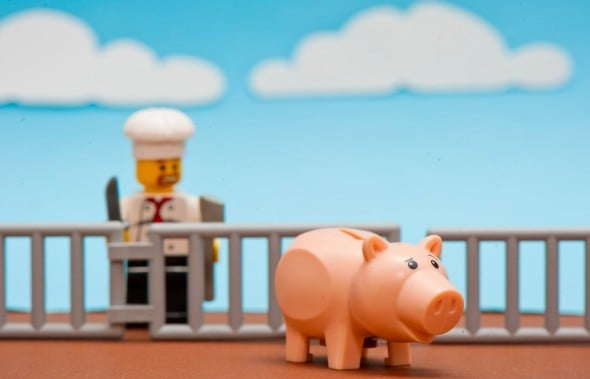
Pooooooor fat. It’s gotten a bad rap over the past number of decades, so companies have been doing everything possible to make everything low fat and “healthy!” (while adding all sorts of preservatives, chemicals, and sugar). Yup…cut out the fat, increase the carbs….and look where THAT has gotten us.
Why has fat been vilified? Rather than get into the politics of it myself, I’ll let Gary Taubes, author of the incredibly thorough and well-researched Good Calories, Bad Calories take over. Here’s an article he wrote for the New York Times a decade ago: What if its all Been a Big Fat Lie? Take the 15 minutes to read that article – it could radically redefine your thinking on fat and carbohydrates.
So, feel free to eat healthy fats, and stop buying ‘low fat’ garbage.
Do I need to eat every 3 hours?
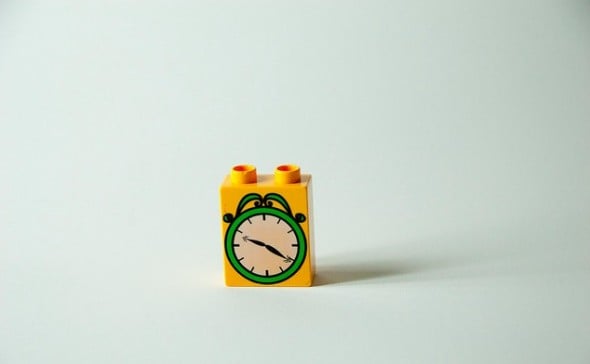
Nope. Eat when you’re hungry, don’t eat when you’re not. Going again back to our evolutionary history, we didn’t always have the luxury of going to a vending machine or drive-through window to pick up food. Sometimes we’d go all day long, or even days at a time, without finding any food. Luckily, we’re designed to use our excess fat stores as energy in these situations.
Don’t worry about eating every three hours.
Sometimes, it’s even okay to skip a meal or two, as long as you don’t go berserk and eat 7 pizzas because you’re so hungry afterward.
Don’t worry about hitting a specific amount of calories each day. If you’re not hungry, don’t eat.
This type of eating is generally referred to as Intermittent Fasting.
What are the criticisms of this diet?
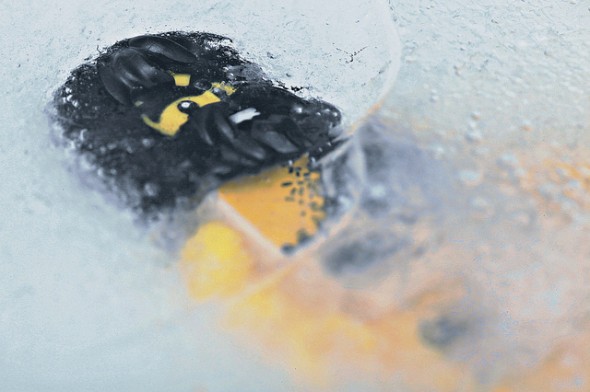
The main criticism that I continue to come across is that it’s “fear mongering” and vilifying grains in the same way that fats have been vilified.
If you really want to drive yourself mad, go spend 30 minutes reading the comments on Tim Ferriss and Robb Wolf’s highly entertaining article about the Paleo Diet – it’s a bunch of dietitians yelling back and forth at each other citing different studies and sources and then calling each other wackjobs.
If you’re not careful, this type of diet can get expensive. But as we know, with a little research, we can make eating healthy incredibly affordable. Admittedly, while I recommend eating organic fruits and veggies, free range chicken, and grass-fed beef, these products can be a bit more expensive in conventional stores due to the processes needed to get them there.
However, farmers’ markets often have well-priced meats, eggs, fruits, and vegetables that are locally grown and incredibly healthy. Even if you’re spending a little more money than before, when you factor in your overall health, spending a few extra bucks on healthier food now is a wiser investment than thousands later on costly medical expenses.
Also, if you’re really short on cash, eating the non organic or grass fed version of a meat, vegetable, or eggs is still better than eating breads, pasta, fast food, and the like.
It’s tough to eat Paleo in today’s society! A normal breakfast in the US consists of bagels, muffins, toast, cereal, or donuts. NONE of those things have any nutritional value, they’re loaded with tons of carbs and calories, and are composed of processed grains that can jack up your stomach. Eating out at restaurants can get tough, and “paleo-approved” is not something you’ll usually find on a menu. Eating in this manner requires careful planning and tons of willpower, but it can be done if you’re dedicated.
“But cavemen had short lifespans! We live way longer now” – I agree with you here, but only because you don’t have to deal with the dangers of living back then. Give those hunter-gatherers access to modern technology and medicine and I bet their lifespan would easily surpass ours.
Lastly, there are those that claim that all of this “we’re not designed to eat grains” stuff is garbage – that plenty of societies around the world consume grains and aren’t fat and unhealthy like us. The China Study is frequently cited when criticizing the Paleo Diet – here are some essays, reviews, and a debate between the author of the Paleo Diet and the author of the China Study that might help you reach a decision.
But this is just a meat diet, and eating all meat is bad! First of all, consider your sources and do your research before jumping to the conclusions. Next, this is not an all meat diet or uber-low carb diet like Atkins. The biggest component of the Paleo Diet? Vegetables! Every meal in a true Paleo diet has a moderate amount of healthy (properly raised chicken, grass-fed beef, hormone free, etc.) meat combined with nutritious veggies or a moderate amount of fruit.
Meh, I’m still not convinced.
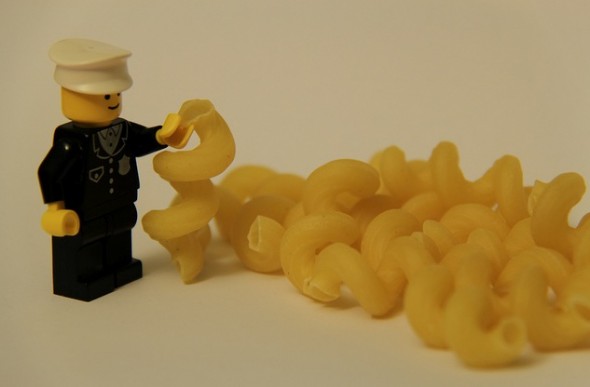
The human body is so incredibly complex that I doubt we’ll ever have a definitive answer on the best possible diet. This one might sound like a fad to you, or it’s too restrictive, complicated, etc.
All I ask is that you try it for 30 days before passing judgment.
I could cite sources about how the Paleo Diet has changed people’s lives or even saved this Doctor’s life (must watch!), but instead I just ask you to try it and then judge for yourself.
Take 30 days and give it a shot – cut out the grains and dairy, start eating more vegetables and fruits, eat more humanely raised and non-grain fed meat, cut out the liquid calories and sugar, and see how you feel after the month is up. If you’re analytical and want numbers to use in your final verdict, get your blood work done at the beginning and end of the month.
Take a picture of yourself now, and then another 30 days from now. I bet you’ll be surprised.
What does Steve think about the diet?
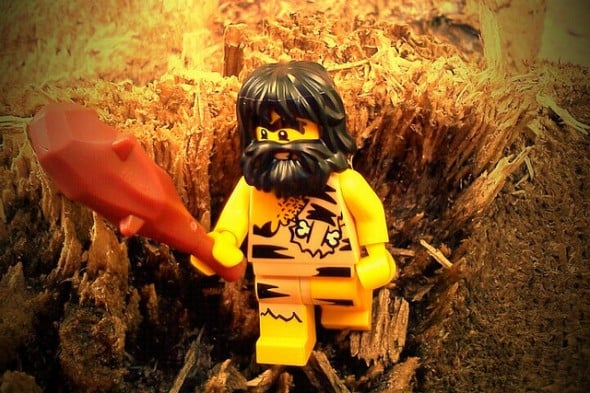
I’m a fan of the Paleo Diet because it makes logical sense to me. I know we existed as a species 150,000 years ago, I know the agricultural revolution didn’t happen until 10,000 years ago, which means we had 140,000 years without grains. In that time we learned to thrive as a species without grains (or else we wouldn’t be here).
The other reason I’m a fan is because you can eat what you want (provided it’s paleo), when you want, and eat however much of it you like. Eat a huge breakfast, skip lunch, and a big dinner. Eat a small breakfast, two snacks, and then dinner. Do whatever makes you happy and fits in your schedule. I like this kind of stress-free eating.
Regardless of whether or not grains should be vilified, I love this diet because I know it WORKS. I know people that have lost incredible amounts of weight and changed their lives within a matter of months.
The diet portion of The Nerd Fitness Academy, is designed around the Paleo Diet (allowing people to ease into it) because I know it works.
Regardless of how you feel about grains, we can all agree that eating more natural foods and less processed foods is better for you.
Where can I get even more info?
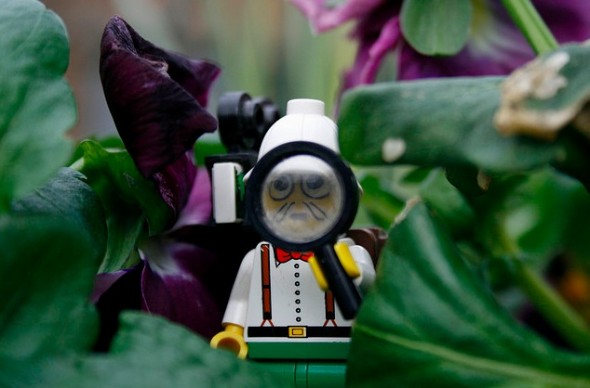
If you’re looking to read more about the Paleo Diet, I have a few resources to recommend. The main links are free resources, the indented links are books available for sale on Amazon:
The Nerd Fitness Academy – Yup, tooting my own horn here. I’m a fan of the Paleo Diet, but I know it can be intimidating, so I’ve created a diet philosophy that allows you to slowly ease into the Paleo lifestyle. I still include minimal resources for vegans and vegetarians if that’s your thing, but I focused on making this whole “diet” thing enjoyable and educational.
Mark’s Daily Apple – Easily the most comprehensive resource on the Internet for the Paleo Diet – Mark writes an article every weekday about everything Paleo, and it usually blows me away. Some of the posts can get overwhelming, so I suggest starting with his Primal Blueprint 101.
The Primal Blueprint – If you want to read about this stuff in a book rather than on a computer screen, Mark’s book The Primal Blueprint is a fantastic place to get started on not only what to eat, but why you should be eating it. It’s educational, funny, real-world applicable, and teaches you how to primalize (just made that up) the rest of your life too.
Robb Wolf – Another great resource, and a guy I’ve already referenced in this article multiple times. Check out his site for a comprehensive FAQ on all things Paleo, a shopping list pdf (right-click and save), and plenty of humor.
The Paleo Solution – This article would have been finished 3 hours earlier, but before I wrote it, I read ALL of Robb’s new book. It seriously had me laughing out loud at certain points – not bad for a book on diet! This book is a little less forgiving than Mark’s book above, but it’s still a great read.
Loren Cordain – Loren is considered the leading expert on the Paleo Diet – Robb is actually one of his students/disciples/padawans. Dr. Cordain is probably the foremost authority on this type of eating, which is why I really enjoyed reading both of his books.
Recipes?

So you’re ready to eat Paleo, but you don’t know how to cook anything, huh? Have no fear, the Internet is a wonderful place:
- Mark’s Daily Apple – Although he sells the cookbook on Amazon, Mark also lists over 100 free primal recipes on his site. Pick something on the list, go buy the ingredients, and follow the instructions! So easy even a caveman can do it.
- Everyday Paleo – Great pictures, easy to follow recipes, and pretty interesting combinations. Click on FOOD in the Nav bar, and the meals are broken down into breakfast, lunch, and dinner.
- Nerd Fitness – Start with a Nerd Fitness approved basic Paleo meal or move on to something more fun like Paleo spaghetti.
Easing Into It
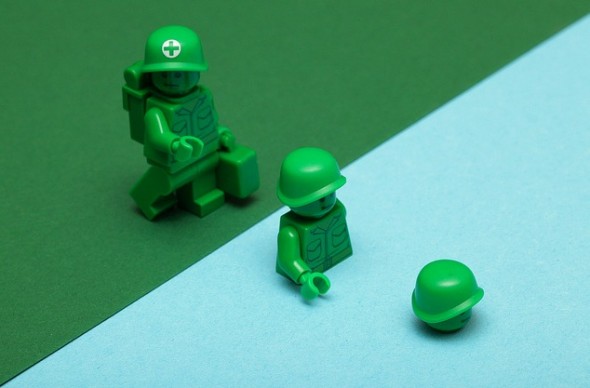
Maybe you’re ready to try out this Paleo lifestyle, but you can’t commit fully – there are certain foods you refuse to give up, or you can’t afford to buy grass-fed beef at the moment. That’s okay! If you can even make a few small changes here and there (cut out liquid calories, switch out your rice for steamed vegetables, cut back on bread, etc.) you’ll start to see some changes. Remember, 20% healthier is better than 0% healthier – as you get more comfortable with the changes you can increase that percentage.
One method (the one I like) is the 80% method – eat really well during the week (all paleo), and then give yourself a day on the weekend to eat whatever you want – pizza, ice cream, cheeseburgers, bagels, etc. Get it out of your system on that one day, and then get back on track the next day. For some people this helps them stay on track, when for others it can be derailing. That will be up to you.
Get rid of the temptation – if you’re gonna go at this thing with a full head of steam, remove all the junk food from your house. It’s going to take a few weeks for your body to adjust to burning fat instead of glucose, and you might want to eat poorly here and there. If there’s no food in your house to tempt you, it will be much easier to stay on target.
What are your experiences or thoughts?

Now, it’s your turn.
Have you tried the Paleo Diet? What was your experience like? Have a criticism of the diet that I didn’t cover before? Do you have another paleo recipe resource? Let’s hear about it!
All I ask is that you keep the debate civil – let’s have a good clean discussion with facts, citations, sources, and personal experiences.
I’ve recently written an update to this article called “The Paleo Diet Debunked” where I address a few of the more recent criticisms that have popped up.
Remember, one of the major Rules of the Rebellion is to question everything!
-Steve
###
photo sources: cavemen elephant hunt, caveman cooking over fire, cavemen hunt paleo bear, milk truck logo, darth vader vendor, storm trooper tomato, lego cook, chef and lego pig, lego explorer, lego muffin, lego bread and carbs, frozen caveman grok lego, lego clock, lego caveman forging for food, caveman with wheel, darth vader and ostrich lego, easing into water lego, lego man with pasta
